One of my favorite special dinners as a child were roasted Cornish Hens with Almond Rice. I loved it and now days it is a nostalgic meal that I still make a few times a year.
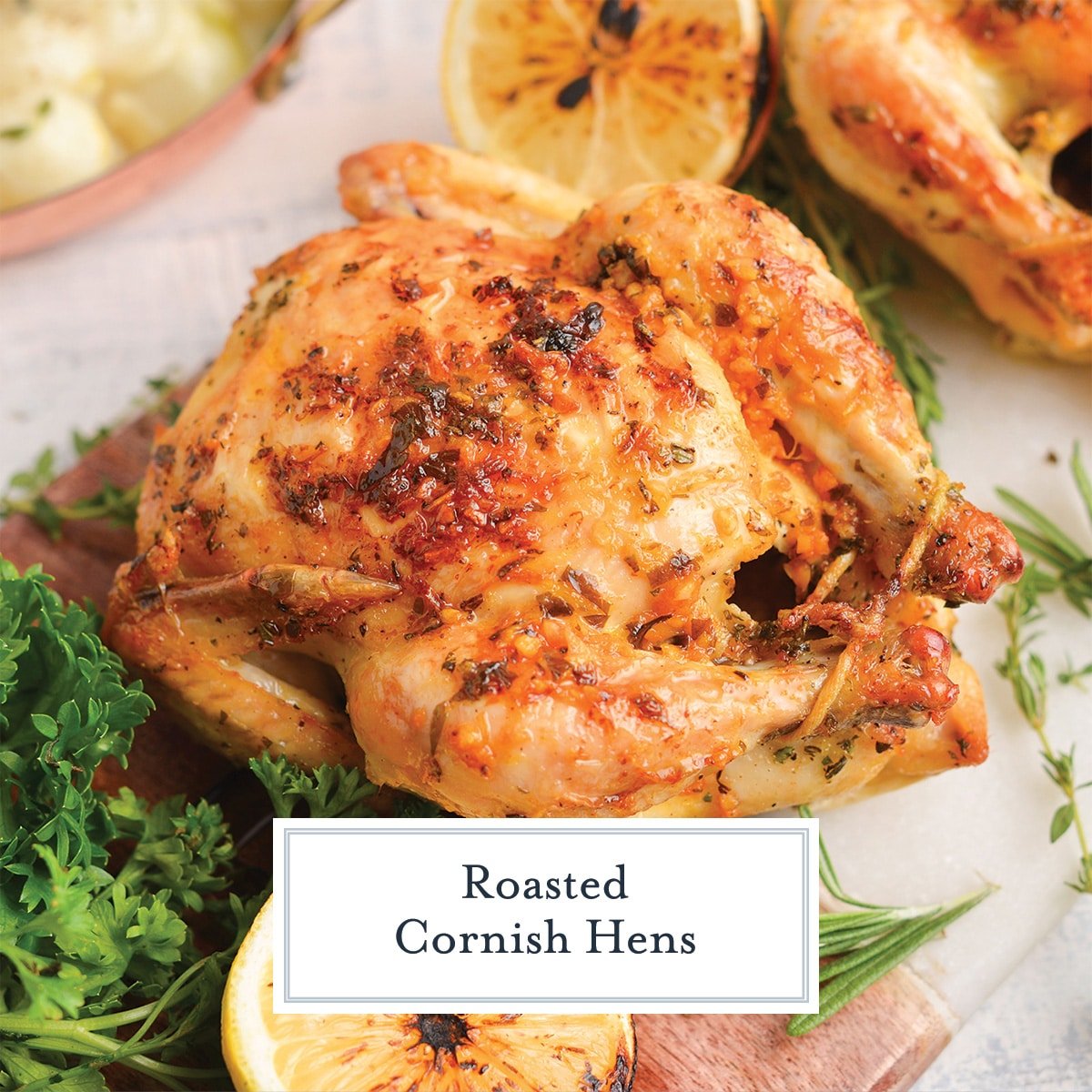
These “little chickens” are show stopping for a holiday meal or special occasion, but also perfectly fine for a delicious meal any day of the week. This cornish hen recipe uses a double-baste technique that starts with herb laced olive oil and finished with a zesty butter sauce.
What is a Cornish Hen?
Cornish game hen is the proper name, but most just call them Cornish hens, Cornish chickens or rock hens. The next question, undoubtedly, is “aren’t they just small chickens?”
Yes and no. They are a type of broiler chicken that comes from the Cornish and Plymouth breeds of chicken. It is generally served smaller at no more than 2 pounds. This is what helps keep them super tender.
They have a large, broad breast which translates to more meat per bird. Because of their demand, they generally cost a little more price-per-pound than regular chicken. In fact, you can use this same technique and recipe with a whole chicken too, just adjust cooking time based on internal temperature.
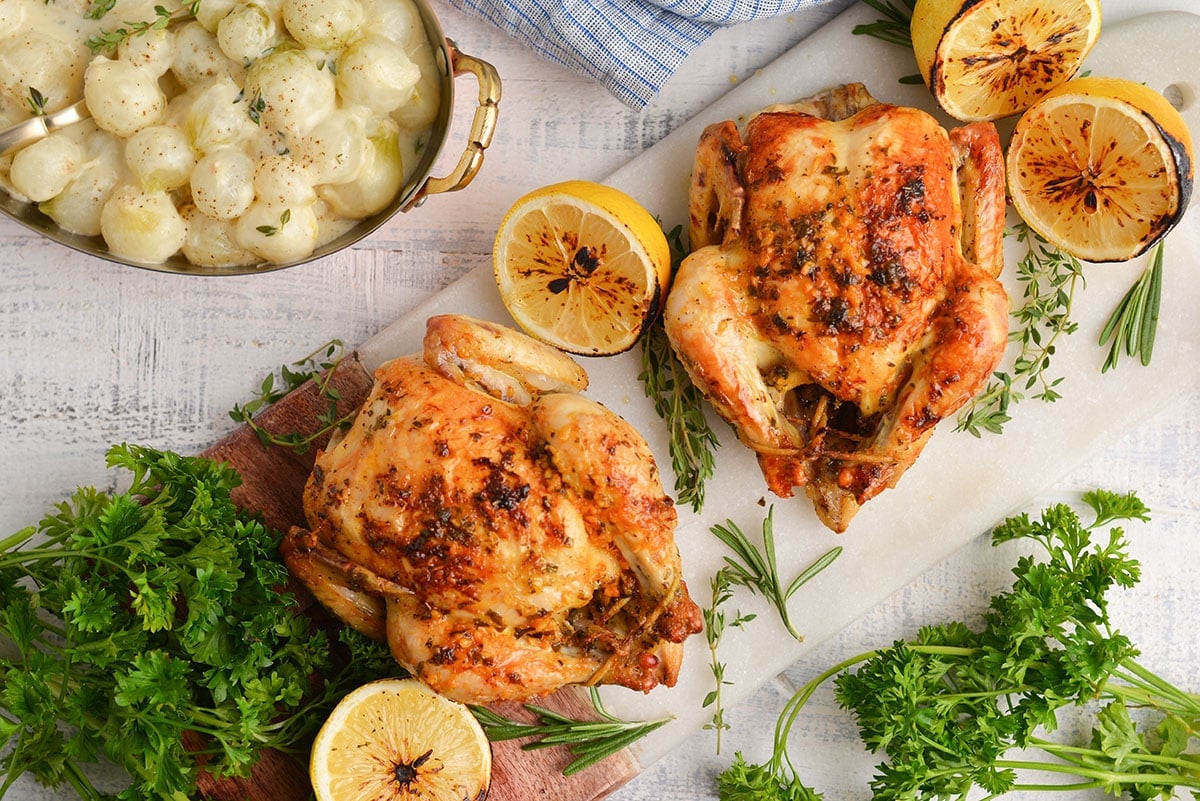
Why you’ll love this Cornish Game Hen Recipe
- Fresh Herbs– Using fresh herbs really takes this one to the next levels, but dried can be swapped, as can the type of herb, it is a totally flexible flavor palette!
- Two Fats– Two, you say? I thought were cutting back on fat. Welp, this is one of those cheat meals and yes, I used two fats, but for good reason. Butter doesn’t have a high smoke point and will burn, so it isn’t good for roasting at high temperatures, but the make-up of a Cornish hen does best when roasted at high heat. High heat = crispy skin + juicy meat. So we roast with herbs and olive oil and finish with a butter baste.
- Zesty Butter– This recipe calls for clarified butter, but feel free to use regular knowing it might brown a bit more from the milk solids. But I take it a step further than just liquid gold… the butter is laced with hot sauce. Not enough to make it spicy, but enough to make it zesty and have your diners asking “what is that? I can’t put my finger on it!”
- Two Types of Lemon- Lemon zest and lemon juice provide two distinctly different flavors. Juice is best fresh and spritzed at the end for an acidic brightening, while zest is used in the baste for full, robust lemon flavor.
- Oven Roasted– This are cornish hens made in the oven, not the grill.
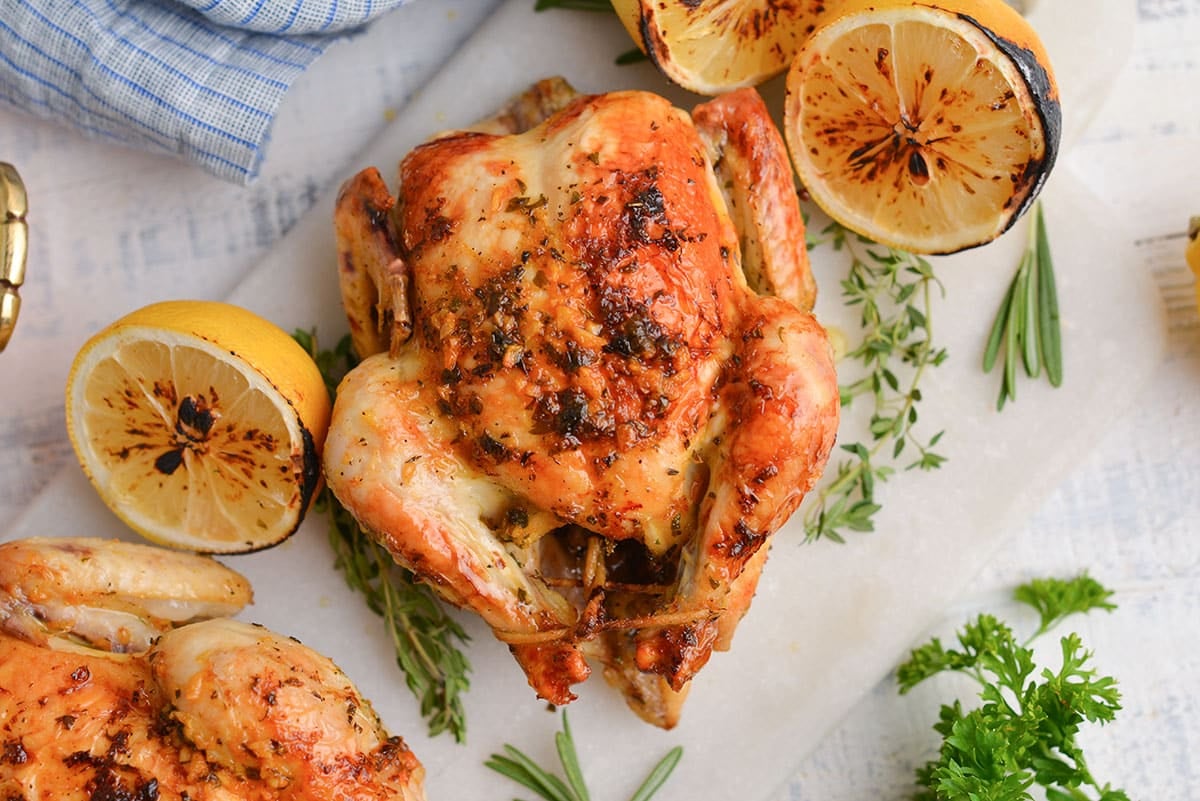
Cornish Hens Recipe Ingredients
In my head, I break the ingredient list into the olive oil baste and the butter baste. Both are very verstile and the same ingredients are used in both making the list look lengthy, but it really is quite simple.
- Cornish game hens– The star of the show, these come anywhere from 1-2 1/2 pounds each.
- Extra virgin olive oil– Any oil with a high smoke point will work, but I prefer olive oil because the flavor profile doesn’t change when heated and it infuses well with the fresh herbs.
- Fresh lemon zest– Zest provides a true and clean lemon flavor without the pucker.
- Fresh herbs- This one is up to you! I used equal amounts of rosemary, thyme and flat parsley (Italian parsley), but feel free to use any flavor combo you want of one or more herbs. Tarragon is another interesting flavor choice, as is marjoram or even mint. Parsley will be used in the butter as well, but can be omitted or swapped with another fresh herb. If using dried herbs, use 1-2 teaspoons of Italian seasoning.
- Coarse kosher salt and freshly ground black pepper– Coarse kosher enhances flavors and helps to balance and make crispy skin. If you want to dial down the pepper, use white pepper.
- Unsalted Butter- There are two additions of salt in this recipe, so I opt for unsalted butter. If you use salted, please omit salt from the butter sauce. For this I clarify the butter first. It is an extra step, but gives the blend a clean, buttery flavor and prevents it from burning under higher temps. Ghee can also be purchased and used, or regular old butter too.
- Fresh Garlic Cloves- Please do not use the jarred stuff which often tastes sweet instead of garlicky.
- Hot Sauce– My secret ingredient! Use just a small does and it gives these birds a zesty flavor without being spicy.
- Charred Lemons– These are optionals, but so pretty when plated. Did you know that heating citrus deepens the rich flavor and aroma and also helps to easily extract the maximum amount of juice? Plain lemon wedges also work.
I also highly suggest kitchen twine for tying the legs in; this ensures tender, juice meat. Optionally, you can also stuff the cavity of each hen with lemon slices, herbs, carrots, bell pepper and onion, but I don’t find this to make much of a difference in final flavor.
Recommended tools for making Cornish Hens in Oven
- Rimmed Baking Sheets– Rimmed baking sheets are awesome because they will hold in the liquid that bakes off during cooking, allowing for a great pan sauce, if desired. But using something with higher sides will result in your hens steaming instead of browning and roasting.
- Cooking Twine– Not necessary, but used to hold together the legs so they cook evenly.
- Garlic press– Pressed garlic offers robust garlic flavor, opposed to minced, which is awesome, but doesn’t rupture as many membranes so will not produce as much garlic flavor.
- Silicone Basting Brush– For basting, you won’t lose as much of the liquid to soaking into the bristles of a traditional pastry brush.
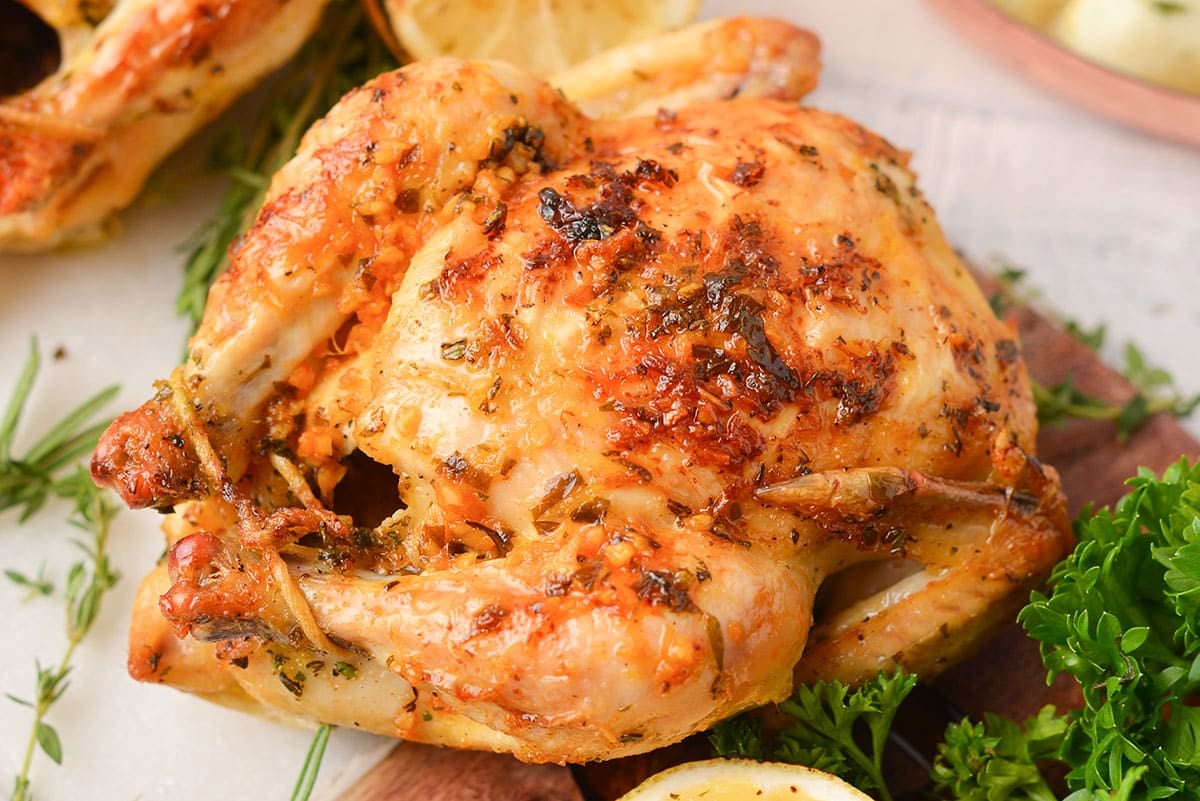
How to Cook Cornish Hens
Roasting cornish hens is pretty easy and broken down into four stages. Prep the birds, baste and roast with olive oil, baste and roast with butter and let rest.
- Preheat the oven to 450°F. Starting at a super hot temp will give the birds a burst of heat to start the browning process and help it be at the standing roasting temperature of 400°F without losing degrees from opening the oven door.
- Line a rimmed baking sheet or shallow roasting pan with aluminum foil for easy clean up. There will be natural juices and run off form the basting sauces, so you need something that will keep the liquids in, but a pan too high-sided can cause the meat to steam and not get a golden brown exterior.
- Remove hens from packaging, rinse with cold water and pat dry with paper towels. The olive oil will not stick to wet birds. Tie back the legs together using butcher’s twine and tuck the wings behind themselves, much like preparing a roaster chicken. Place hens in the baking vessel.
- Stir together the olive oil, lemon zest, fresh herbs, salt and pepper in a small bowl and then baste it all over the outside of the hens. Reduce the oven temp and roast with the breast side up for 40 minutes.
- Meanwhile, prepare the butter sauce, which is basically my garlic butter sauce spiked with hot sauce, by melting the butter in a small saucepan or in the microwave and whisking in the garlic, parsley, hot sauce, salt and pepper. The butter may solidify while sitting and require to be reheated when you baste. This step can be done ahead of time regardless of if you are using clarified butter or regular butter.
- At 40 minutes, lower the oven temperature to 350°F so it is at the smoke point of the butter. Remove the hens and baste with well on just the top side with half of the butter (and maybe a little in the cavity for good measure). Return to the oven and bake for another 10 minutes. Baste again and continue to bake for another 10 minutes. Depending on the size of the birds, you might have a little butter leftover, that is fine, just discard it.
- Check the internal temperature and if it reads between 155-160°F, it is time to remove them. If not, keep them in the oven until they reach the desired temperature which ranges depending on size.
- Remove, gently tent with aluminum foil and then rest for 10 minutes before serving. Char the lemons by setting them over an open flame on a gas or propane stove, on the grill or carefully with a butane torch.
- Garnish with thyme sprigs or sprigs of fresh rosemary.
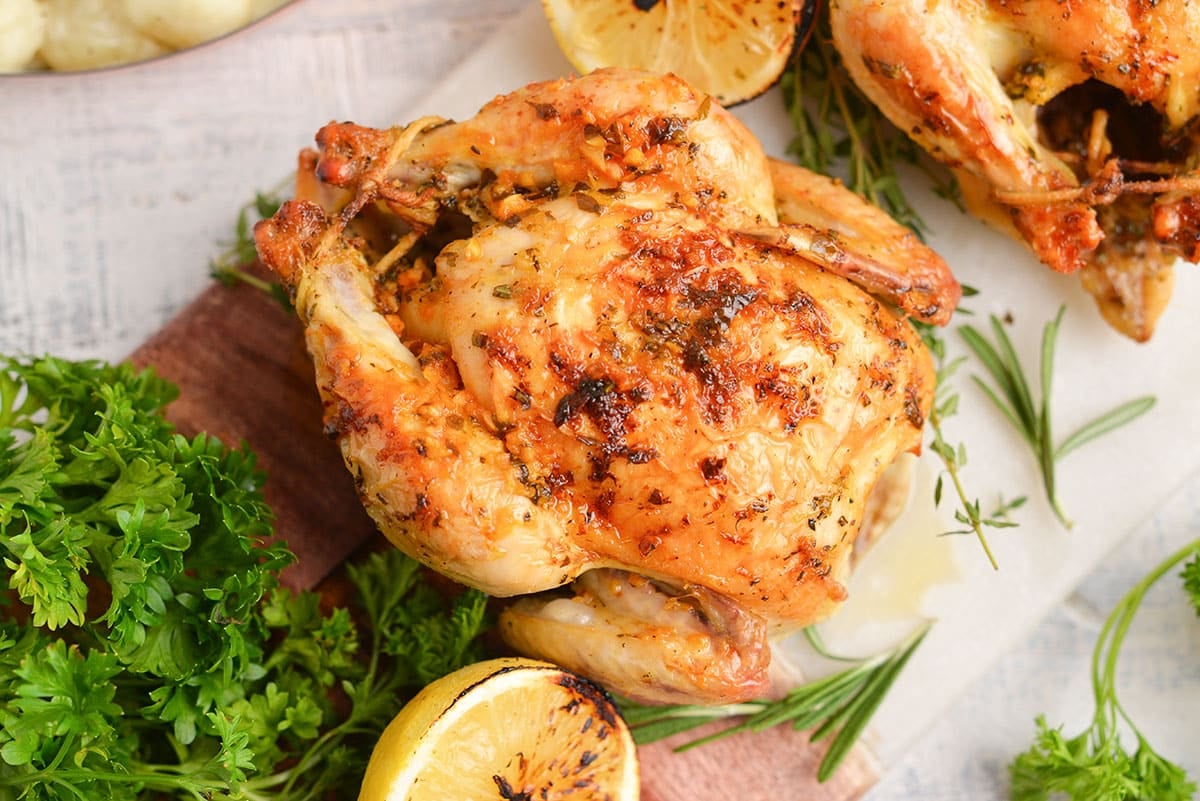
Cornish Hen internal temperature
The internal temperature of a cornish hen should be 165°F. But like most proteins, they need to rest and due to carry-over cooking, the temperature will rise about 5-10° during this time. Pull the hens when they reach between 155°F-160°F and they should be the perfect temp after resting.
For best results use an instant read digital thermometer and insert it in a fleshy area away from the bone.
Making this Cornish Hens Recipe in advance
Making this delicious recipe does require some time, both hands-on and hands-off, but they doesn’t mean you need to do it all the day you plan to serve them. They can be made ahead of time and reheated in the oven, however the crispy skin will never fully regain its original glory.
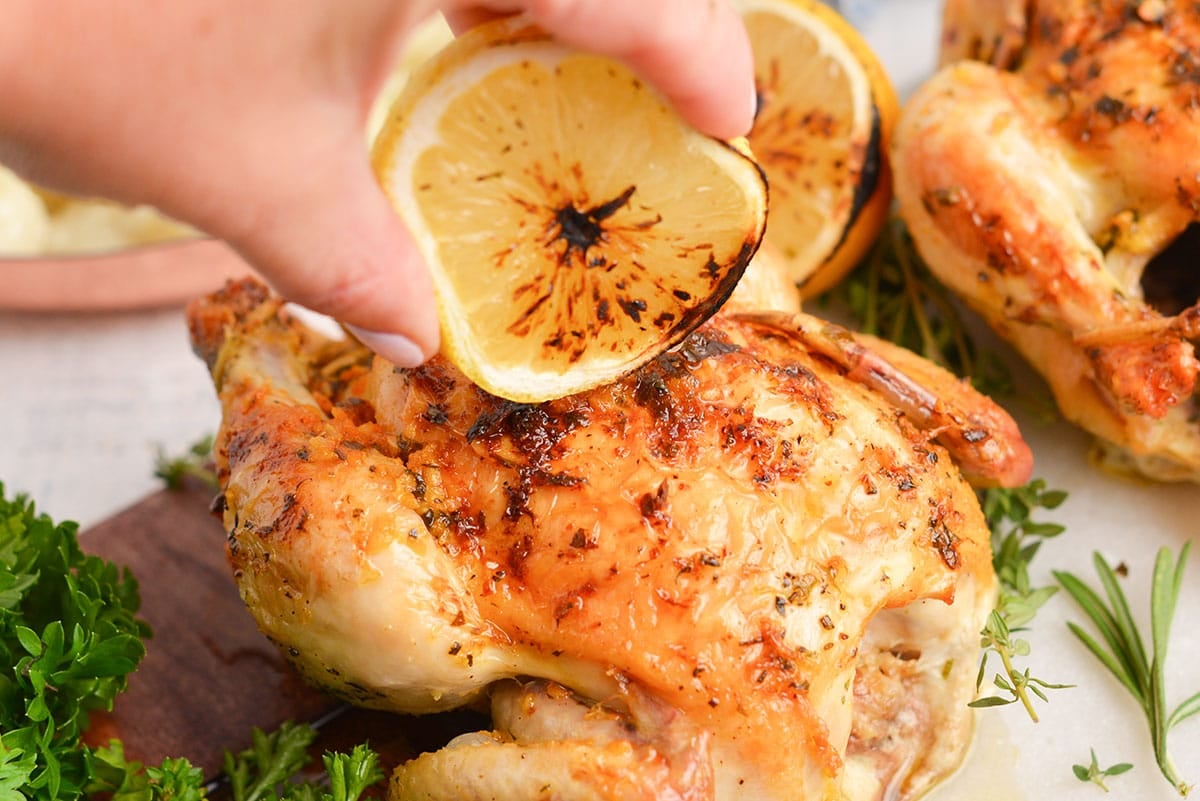
Tips for making Cornish Hens in oven
What is the best way to thaw a Cornish hen? In the fridge overnight or in a cold water bath in the sink.
How long does a thawed Cornish hen last? After thawing, cornish hens are good for up to 3 days in the fridge.
How much Cornish Hen should I plan for each person? This depends on how large they are. Smaller hens are one per person and larger can be cut in half, but I would make sure to have heavy sides to accompany them.
Hens can be cut in half using kitchen shears before cooking, place meat side up and reduce cooking time by about 15-20 minutes. Rely on an instant meat thermometer.
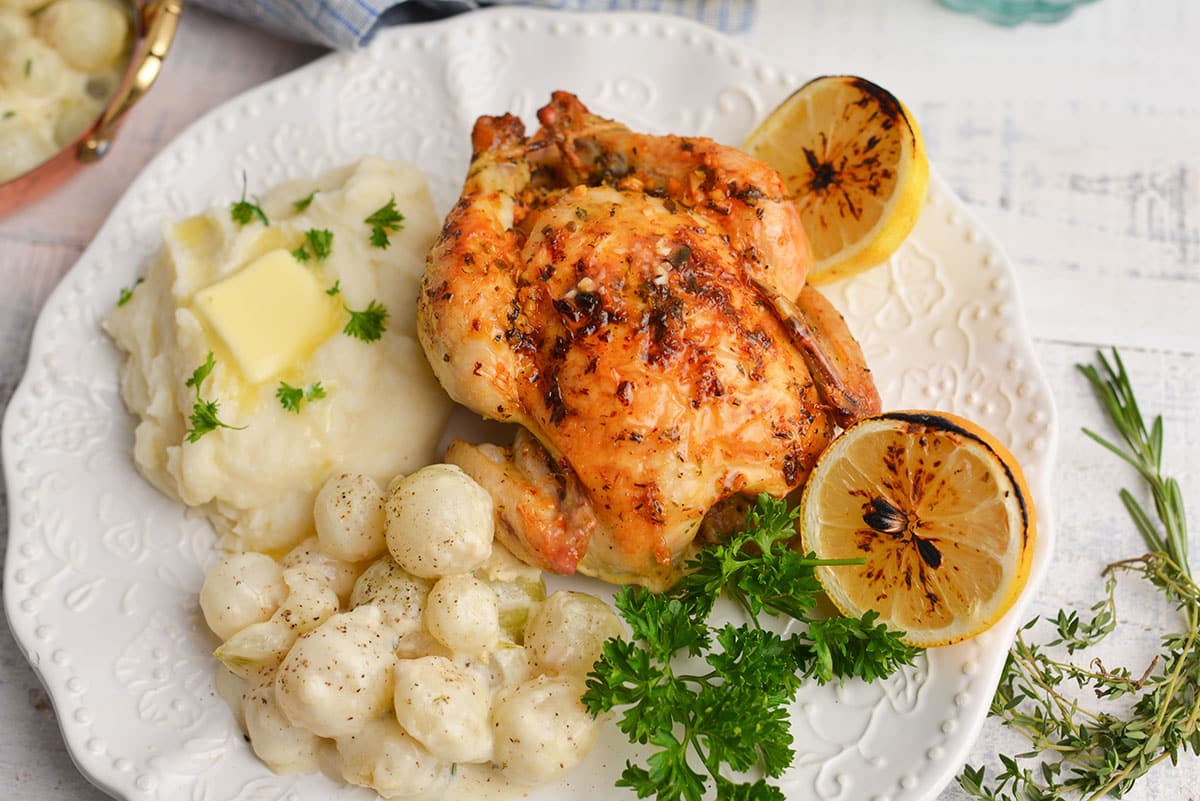
Cornish Game Hens Recipe Serving Suggestions
The easy answer is whatever you’d like, but I served this cornish hens recipe with my creamy mashed potatoes and creamed onions. I also love them with wild rice or sweet potatoes, Brussels sprouts and buttered noodles.
More side dishes include focaccia bread, broccolini or macaroni salad.
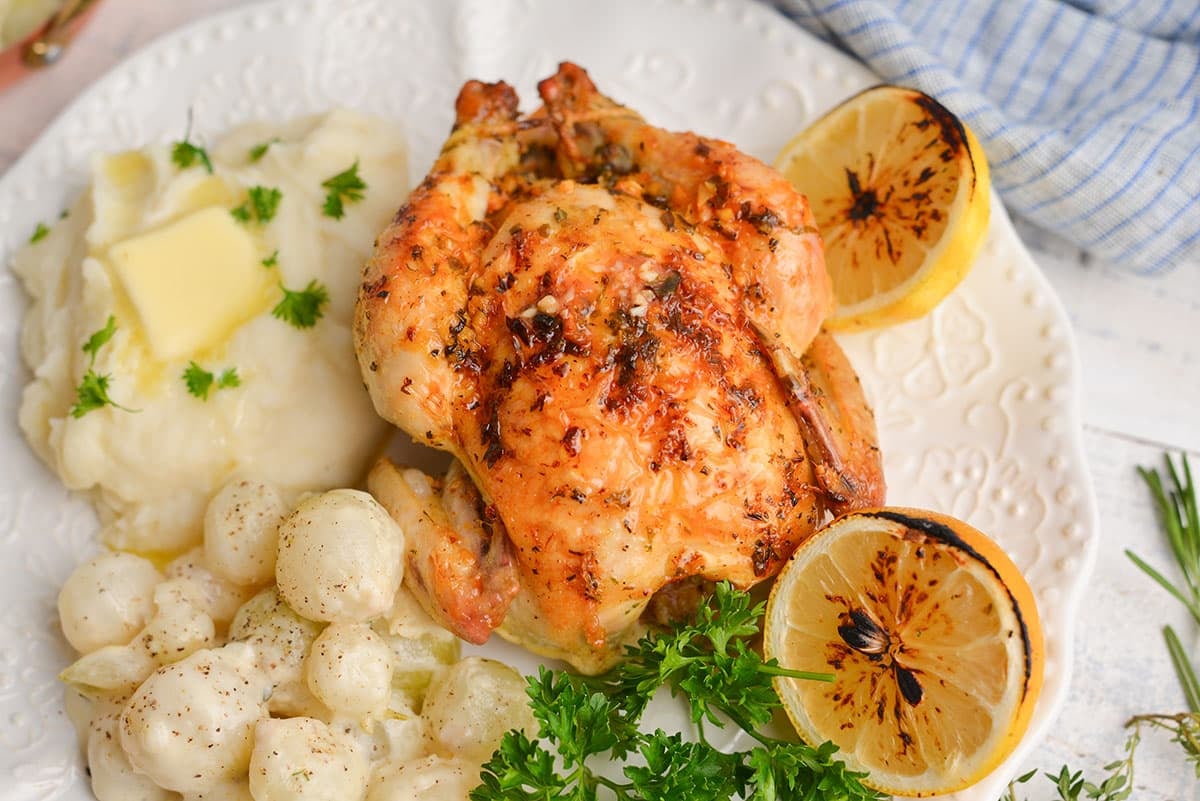
Storing Cornish Hens
Store leftovers in an airtight container for up to 5 days. Reheat in the microwave or oven. Meat can also be shredded and used in any recipe calling for shredded chicken.
Can Cornish hens be frozen? Yes, you can freeze them raw (uncooked) or cooked. Keep them frozen for up to 6 months. The initial packaging is perfect for freezing, so if you happen to catch them on sale, go ahead and buy a few for later.
Reheating Cornish Hens
Make sure they are fully defrosted before cooking. The thaw cooked hens, keep them in the fridge for several hours or heat from frozen in a warm oven. The exact times will vary greatly depending on size.
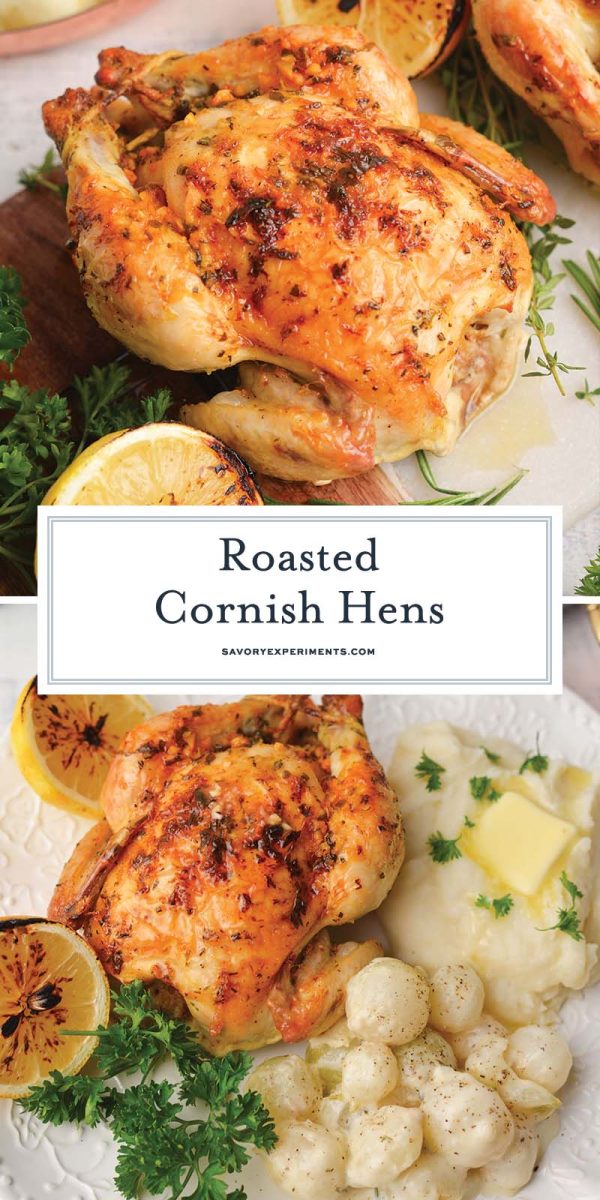
More Elegant Dinner Ideas
- Crispy Duck
- French Baked Scallops
- Prime Rib
- Sweet Roasted Goose
- Cumberland Sauce
- Air Fryer Cornish Hens
- Whole Chicken in the Instant Pot
Crown Pork Roast
Scallion Pesto Pasta Recipe
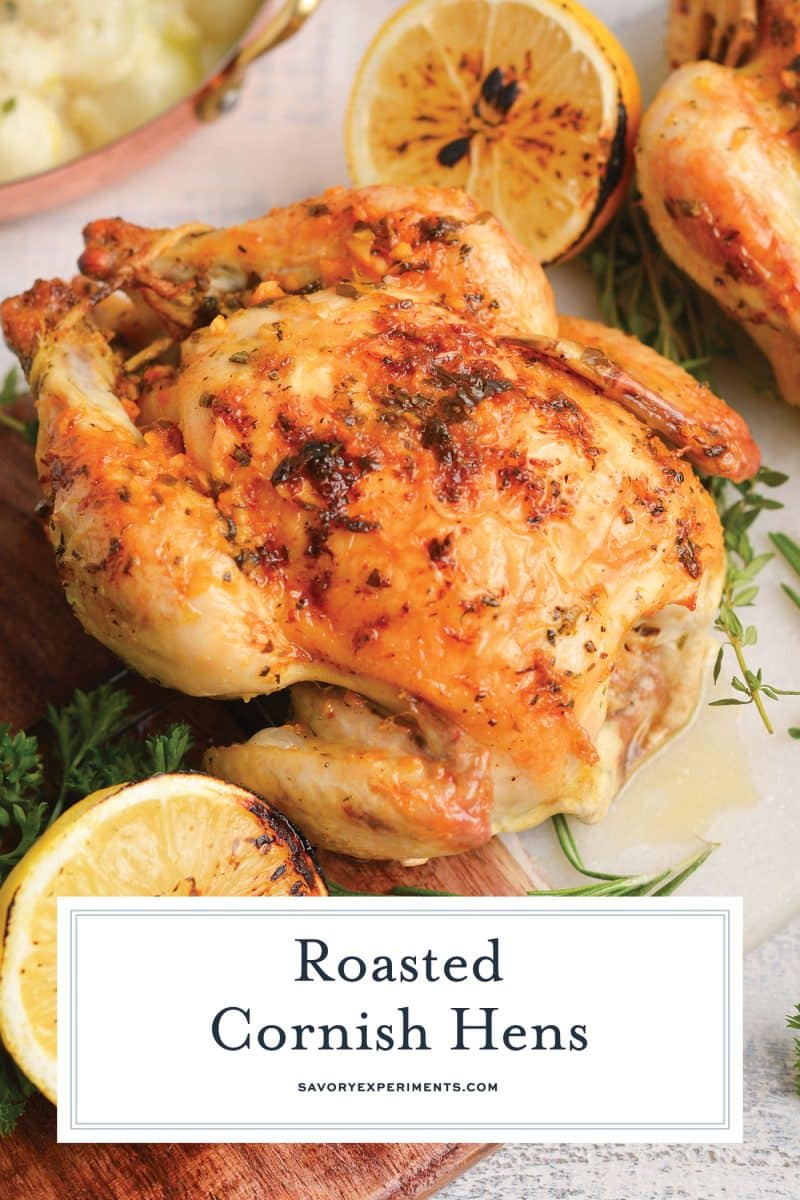
Garlic Herb Cornish Hens Recipe
Ingredients
- 2 1.25 lb Cornish hens
- 2 tablespoons extra virgin olive oil
- 1 tablespoon fresh lemon zest , about 1 lemon
- 1 tablespoons fresh herbs (rosemary, thyme, parsley) , chopped
- 1/2 teaspoon coarse kosher salt
- 1/4 teaspoon ground black pepper
Butter Sauce:
- 6 tablespoons unsalted butter , clarified preferred
- 2 cloves fresh garlic , finely minced
- 2 teaspoons flat leaf parsley , minced
- 2 teaspoon hot sauce
- pinch coarse kosher salt
- 1-2 lemons , cut in half and charred, optional
Instructions
- Preheat the oven to 450°F. Line a rimmed baking sheet or low sided roasting pan with aluminum foil.
- Remove hens from packaging, rinse with cold water and pat dry. Tie back legs together using butcher's twine and tuck the wings behind themselves. Set aside.
- In a small bowl, stir together the olive oil, lemon zest, fresh herbs, salt and pepper. Baste both sides of each hen with the olive oil, pouring any remaining in the cavity. Arrange 2-3 inches apart with the breast side up.
- Reduce the oven temperature to 400°F and place the hens in the oven. Bake for 40 minutes.
- Meanwhile, prepare the butter sauce by melting the butter in a small saucepan or in the microwave. Whisk in the garlic, parsley, hot sauce, salt and pepper. Butter may solidify while sitting and require to be reheated when you baste.
- At 40 minutes, lower the oven temperature to 350°F, remove the hens and baste with well on just the top side with half of the butter. Return to the oven and bake for another 10 minutes. Baste again and continue to bake for another 10 minutes. Check internal temperature. If it reads between 155-160°F, it is time to remove them for resting. If not, keep them in the oven until they reach the desired temperature which ranges depending on size.
- Remove, gently tent with aluminum foil and then rest for 10 minutes before serving. Serve with charred lemon halves.
- If you've tried this recipe, come back and let us know how it was in the comments or star ratings!
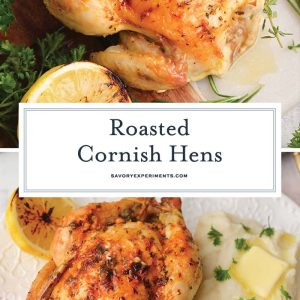
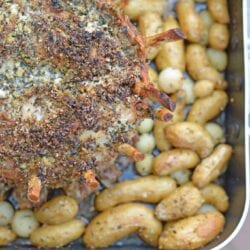
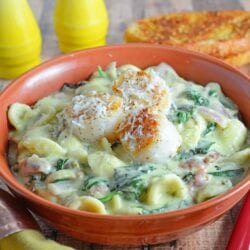
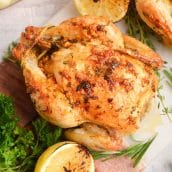
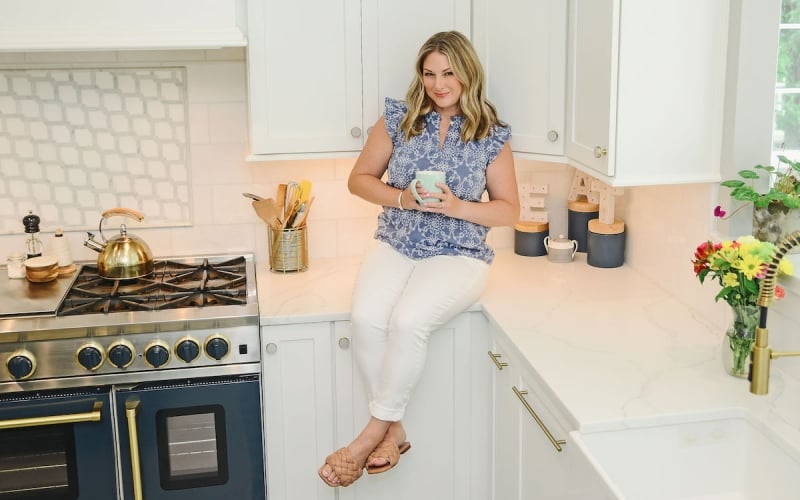
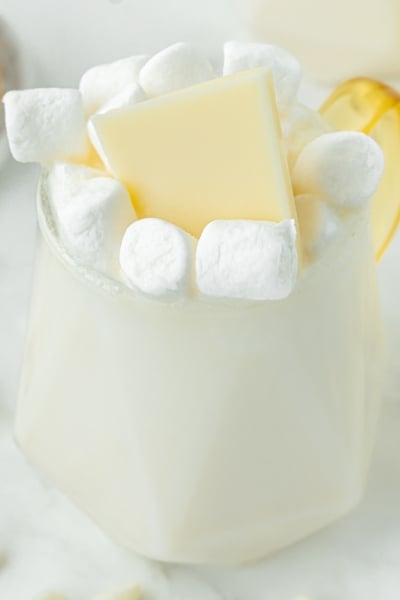
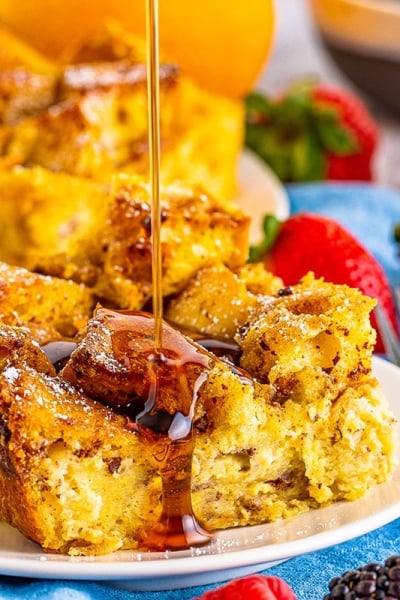
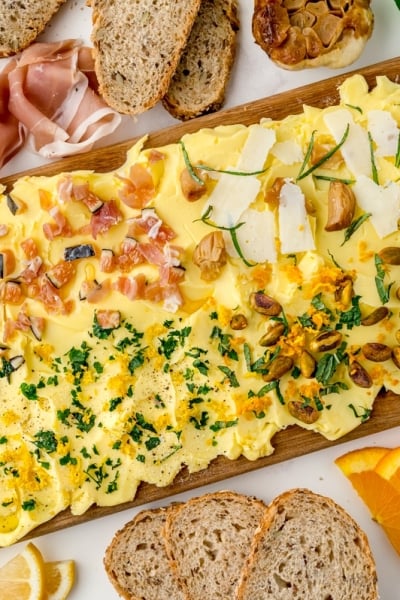
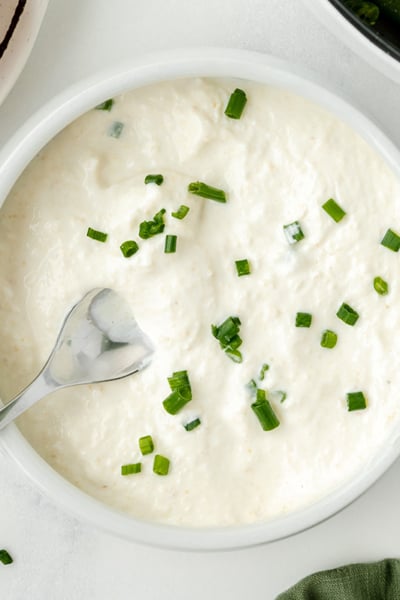













Enjoyed this for dinner last night and it was a hit all around the table! Turned out perfectly moist and flavorful; easily, a new family favorite dish!
Loved this recipe and am with you on using the two fats. Something you just gotta for the best result! Will definitely be making this recipe again. It was divine.
Fantastic Recipe! I will try this for my special dinner with my family!
This looks delicious! I don’t think you can go wrong with anything that has a butter herb sauce.
Simple yet so delicious recipe for dinner. Thanks for sharing.
These are totally crispy and delicious- thank you!
Making this tonight, maybe I can put this in the Air Fryer and put butter mixture ontop
Hi Missy! You might be able to- however I’ve never tried it out. I actually just got an Airfryer, so I’ll check it out. Or let us know how it went!
Can we change this up and cook the Cornish hens whole? If so, what would I need to adjust? Thanks in advance!
You sure can! It will probably take closer to an hour to cook them, but really you should base it on internal temperature. They still need to be 165 degrees. I would guess 50 minutes to cook and 10 minutes to rest.
I don’t see where the hens were NOT baked whole. Did I miss that part of the recipe?
Are you asking how to roast them halved?
My husband does most of the cooking in our house and he is always looking for new recipes. I was a little skeptical but thee came out SO WELL. Very tasty.
This is such a simple recipe for a classic dish! Will be adding this to my dinner menu often.